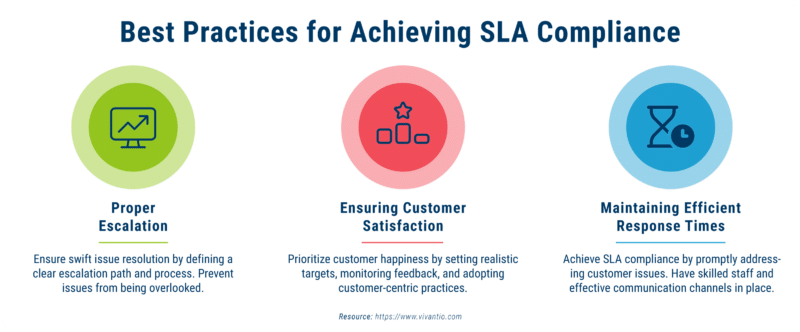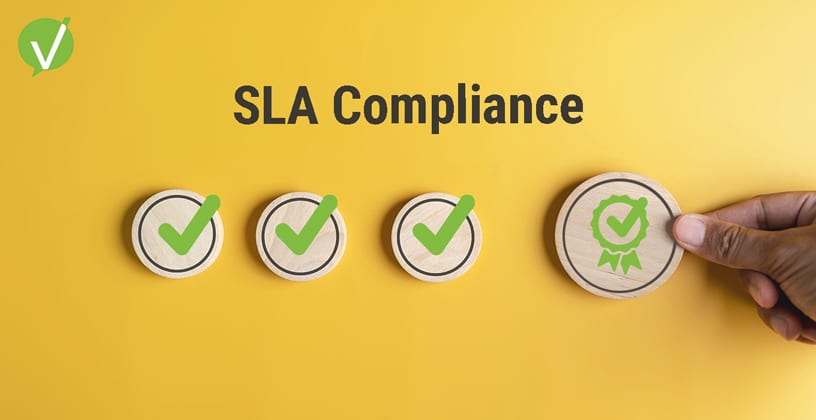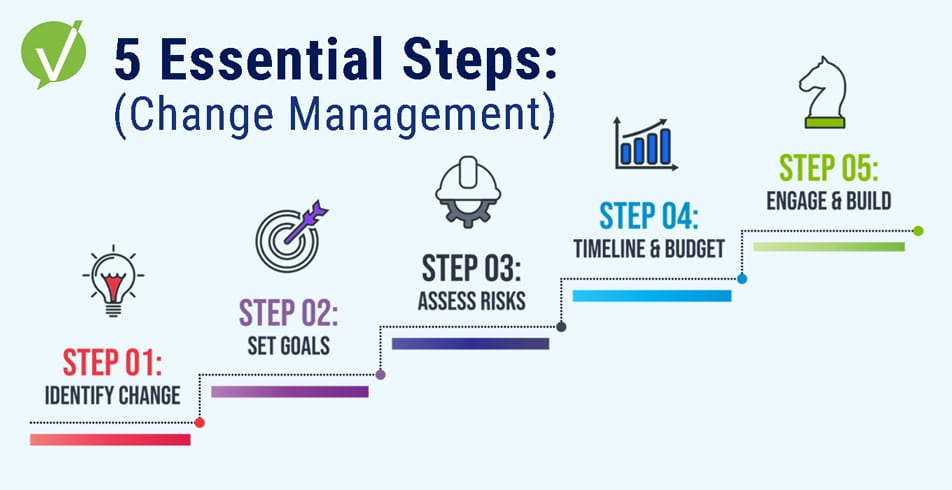SLA Compliance: Meeting Service Level Agreements with Precision
Introduction
If you are a service provider, you know how important it is to meet Service Level Agreements (SLAs) consistently. Customers expect you to deliver the services you promised with precision, on time, and of the highest quality. That’s why SLA compliance is critical for your business to succeed and meet customer expectations.
This article will discuss best practices for achieving a high level of performance, including metrics used to measure compliance, strategies for proper escalation, maintaining efficient response times, and help desk management. Additionally, we will explore ways to measure and track SLA compliance and how best to ensure service performance and delivery.
Whether you are new to SLAs or a seasoned ITSM professional, this article will provide you with the necessary insights to achieve SLA compliance across your organization.
Key Takeaways:
- SLA compliance is crucial for meeting customer expectations.
- Best practices include proper escalation, efficient response times, and help desk management.
- Measuring and tracking SLA compliance is essential for service performance and delivery.
- Alignment of service levels with SLA parameters is critical.
- Evaluating vendor performance enhances overall SLA compliance.
Understanding SLA Compliance and Its Importance
As a service provider, meeting the requirements set out in a Service Level Agreement (SLA) is crucial for maintaining a good relationship with your customers. An SLA is a contractual agreement that outlines the level of service a customer can expect from you, including specific performance targets and metrics.
Effective SLA compliance enables you to deliver your services with precision, meeting your customers’ needs and expectations. It also helps to maintain trust and professionalism within your business relationship with customers.
One of the most significant aspects of SLAs is the SLA reporting metrics used to measure compliance. These metrics commonly cover areas such as resolution times, uptime, incident response times, and other critical performance indicators. As such, it’s vital to monitor and track compliance regularly to ensure your service provider is meeting the agreed-upon targets and maintaining optimal service performance.
Best Practices for Achieving SLA Compliance
Meeting service level agreements is essential to maintaining strong customer relationships and ensuring business success. But how can you ensure SLA compliance while still meeting customer needs? In this section, we will explore the best practices that organizations can adopt to achieve SLA compliance and exceed customer expectations.
Proper Escalation
One of the most critical factors in achieving SLA compliance is proper escalation. When customer issues arise, it’s essential to have a process in place for escalating the issue to the appropriate parties. By defining the escalation path and ensuring everyone is aware of the process, you can prevent issues from falling through the cracks and ensure swift resolution.
Ensuring Customer Satisfaction
Customer satisfaction is at the heart of SLA compliance. To meet the agreed-upon service level agreements, you must ensure that your customers are satisfied with the service they receive. This can be achieved by setting realistic targets, monitoring customer feedback, and implementing customer-centric practices.
Maintaining Efficient Response Times
Response time is a critical factor in achieving SLA compliance. By setting and maintaining response time targets, you can ensure that customer issues are addressed promptly. To achieve this, it’s essential to have the right resources in place, including skilled staff and effective communication channels.

The Role of Help Desks
The help desk is a crucial element of SLA compliance. By providing a single point of contact for customer issues, you can streamline the resolution process and ensure that issues are addressed promptly and efficiently. To maximize the effectiveness of your help desk, it’s important to implement best practices such as tracking and reporting customer issues, implementing automation where possible, and providing timely updates to customers.
By adopting these best practices, organizations can ensure SLA compliance and exceed customer expectations. Whether you’re implementing a new SLA or looking to improve an existing one, these practices will help you achieve success and maintain strong customer relationships.
Measuring and Tracking SLA Compliance
As you seek to meet your Service Level Agreements (SLAs) and exceed customer expectations, it’s important to measure and track compliance. Key performance indicators (KPIs) are critical metrics that measure your service performance and delivery, and they go a long way in identifying areas that require improvement. To ensure compliance with SLAs, you need to use KPIs and establish the appropriate threshold or target, which is your SLA.
In tracking SLA compliance, you can use resolution time, which is the time it takes to resolve a service request. Ideally, the resolution time should never exceed the set SLA targets. When it does, you must evaluate the factors that contributed to the delay and take steps to correct them. You can easily monitor and manage resolution time by regularly collecting data and analyzing it to identify patterns and trends.
Another KPI that you should consider when tracking SLA compliance is service delivery. This KPI measures how well the service provider delivers the service. It’s measured using various indices such as uptime, downtime, and mean time to failure. The data on service delivery is used to improve service quality, reduce downtime, and minimize disruptions to your business operations.
KPIs |
Description |
|---|---|
| Resolution Time | The time it takes to resolve a service request. |
| Service Delivery | Measured by uptime, downtime, and mean time to failure, this KPI tracks how well the service provider delivers the service. |
Measuring and tracking SLA compliance allows you to stay on track and evaluate your progress. You can use the data gathered to identify areas that need improvement and make data-driven decisions. When you track your compliance regularly, you will be able to make quick adjustments and take corrective actions that ensure you stay on track to meet your set targets.
Ensuring SLA Compliance Across the Organization
Meeting service level agreements (SLAs) is essential for customer satisfaction and maintaining strong business relationships. It is crucial to ensure SLA compliance throughout your entire organization. The following strategies can help align service levels with the agreed-upon parameters and prevent agreement compliance issues:
- Communicate SLA expectations with all relevant stakeholders, including vendors and internal teams.
- Evaluate vendor performance regularly to ensure they are meeting SLA requirements.
- Document all SLA-related activities and make them available to all parties involved.
- Track and measure SLA compliance using key performance indicators such as service request resolution time.
When evaluating vendor performance, it is important to keep in mind your specific service level agreement compliance needs. Define an SLA that clearly outlines your agreement compliance expectations, including service levels and remedies for SLA violations. Use these metrics to evaluate performance from a business perspective and ensure SLA compliance across all business units.
Types of SLAs and Implementing Effective Compliance
Service Level Agreements (SLAs) come in different shapes and sizes, and it pays to understand each type to help you implement effective compliance. Two commonly used types of SLAs are Service-based and Customer-based SLAs. Service-based SLAs are centered on the services provided, while customer-based SLAs prioritize the customer’s needs.
Another type is multilevel SLAs, which involve a comprehensive framework that considers different levels of service. Multilevel SLAs can help you provide a customizable and responsive experience, making it easier to meet and even exceed SLA compliance requirements and customer expectations.
To implement effective SLA compliance, it is essential to evaluate SLA compliance documents and ensure they meet your business demands, taking into consideration your company’s resources and limitations.
“Understanding the types of SLAs can help you design services and establish compliance requirements that meet your customers’ and business’s needs”
Addressing Challenges and Enhancing SLA Compliance
Ensuring SLA compliance can be a challenging task for organizations. To achieve success, you must address potential challenges and develop effective management solutions that align with your business perspective. One of the most critical factors in achieving SLA compliance is building and maintaining a strong business relationship with your service provider.
Effective communication and collaboration between different business units can also enhance your organization’s ability to comply with SLAs. By working together, you can evaluate vendor performance and implement necessary changes to improve overall compliance.
When addressing challenges, it’s important to take a holistic approach to SLA compliance. Consider implementing management solutions for monitoring and reporting on SLA compliance across all business units. This will enable you to identify potential compliance issues proactively and implement necessary changes before they become significant problems.
Unlock your organization’s potential for SLA compliance with Vivantio’s expertise. With 20+ years of experience, we seamlessly integrate ITIL principles and data-driven decision-making to boost service performance, vital for customer satisfaction and success. Prioritize the right SLA metrics, empowering you to identify improvements and meet service objectives. Achieve higher productivity, customer satisfaction, and streamlined support. Connect with Vivantio today or request a demo for seamless SLA compliance.













